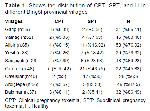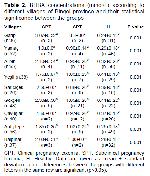Pregnancy toxemia is a metabolic disorder in which pregnant goats suffer hyperketonemia. This condition is typically triggered by a decrease in energy balance during the last two to three weeks of pregnancy
2,15. The prevalence of pregnancy toxemia in the world has been researched more in sheep than in goats, and there are a limited number of studies investigating the prevalence of pregnancy toxemia in goats
10,16. However, no studies investigating pregnancy toxemia in goats have been found in Türkiye. In this study, it was aimed to determine the prevalence of pregnancy toxemia in hair goats in Bingöl province by blood BHBA measurement, and the presented study is the first research conducted in this context in Bingöl province. Animals that develop NED deplete their fat stores. The body consequently produces acetone, acetoacetic acid, and BHBA also referred to as ketone bodies. BHBA is widely preferred in the diagnosis of ketosis because it is found more stable in the blood among the ketone bodies mentioned
1,11. While the blood BHBA cut-off value for the diagnosis of SPT in goats was determined as 0.8-1.6 mmol/L
1,17, a value of >1.6 mmol/L was accepted for the diagnosis of CPT
18. In this study, blood BHBA level was preferred in the diagnosis of pregnancy toxemia. In addition, the above-mentioned BHBA levels were used as a reference in this study to group pregnancy toxemia. In this study, it was determined that BHBA levels in the CPT groups were significantly higher than in the H and SPT groups. Previous published literature findings also support the ΒHBA results of the CPT and SPT groups in this investigation
15,17.
In both developing and undeveloped nations, goats play a vital role in the economy due to their high productivity of meat, milk, and wool. This is especially true in regions that are too rocky, mountainous, or shrubby for agriculture7. Pregnancy toxemia is a disease for which prevention strategies need to be developed due to maternal and offspring losses, high treatment costs, and the predisposition of these animals to transitional diseases (retention secundinarum, mastitis, metritis)15,19. To take comprehensive measures to prevent the occurrence of pregnancy toxemia, the prevalence of the disease in the region must be known. Furthermore, it is mentioned that regional variations in administrative practices, racial predispositions, and environmental factors may all affect the occurrence of pregnant toxemia16. In the study conducted by Sathish16, the prevalence of SPT in sheep was found to be 15.33%, while Gupta et al.20 found it to be 14.86% in their study. In another study, it was stated that the prevalence of the disease in sheep was approximately 5-20%6. Pregnancy toxemia prevalence was reported as 13.3% by Ismail et al.21, 36.7% by Murugeswari and Mathialagan2, and 35% by Khan et al. 10. In this study, the prevalence of pregnancy toxemia was found to be 23.87%, while SPT was 73.68% and CPT was 26.32%. The results of this study are similar to those of Ji et al.6, Sathish,16 and Gupta et al.20 data, while Murugeswari and Mathialagan2 and Khan et al.10 were found to be lower than the results. The possible reason for this may be related to regional differences, economic situation and seasonal conditions.
Many different risk factors play important roles in the occurence of pregnancy toxemia10,21. In order to prevent pregnancy toxemia and increase production efficiency, the interaction between animals and the environment must be taken into account 10,22. Goats biological systems are impacted by physiological stressors, such as seasonal fluctuations22,23. In Bingöl province, goats are kept in pastures in summer and in barns in winter due to harsh climatic conditions and snowfall. It is well recognized that the inability to fulfill the rising energy needs of winter and the modifications and adaption process to a new environment have a negative impact on the metabolism 5,23,24. Khan et al.10 found the prevalence of pregnancy toxemia to be higher in winter than in summer. Pregnancy toxemia is more common in the winter, and one reason for this is because in some regions, the months of January and February are the birth seasons and correspond with the final two to three weeks of pregnancy21. Pregnancy toxemia has been determined to be 23.87% prevalent in Bingöl province. The reason for this is believed to be a combination of the winter season, physiological stress factors, lack of grazing, and the fact that births take place around this time in reproductive planning.
Like many metabolic illnesses, pregnancy toxemia is known to be significantly impacted by age25. Older animals with pregnant toxemia have been shown to meet the energy deficit less quickly and insufficiently than younger animals10. In addition, this situation leads to disruption of metabolic adaptation mechanisms and an increase in NEFA and BHBA concentrations25. The average age of the goats in this study was 4.5±0.8 years old, which is considered to be an important risk factor that will affect the prevalence of pregnancy toxemia in goats10,25.
As a result, the animals included in thisstudy consist of 398 hair goats that were in the last 3 weeks of their pregnancy. It was found that 303 of the goats were healthy (H), 25 were CPT, and 70 were SPT. In light of the findings of this study, it is believed that pregnancy toxemia significantly damages the financial structure of family-run companies in the area and that season and advanced age play a major role in the risk of pregnancy toxemia in hair goats. In further studies, it would be useful to analyze all risk factors affecting prevalence in detail and evaluate a larger study population.




